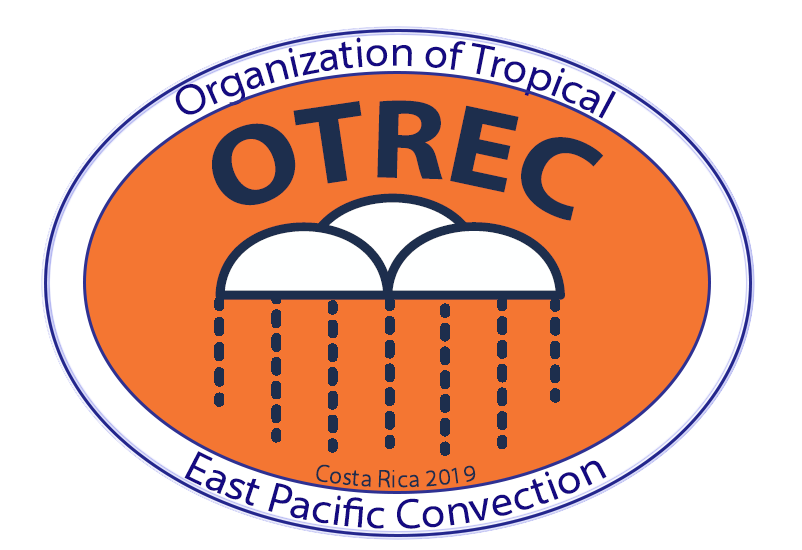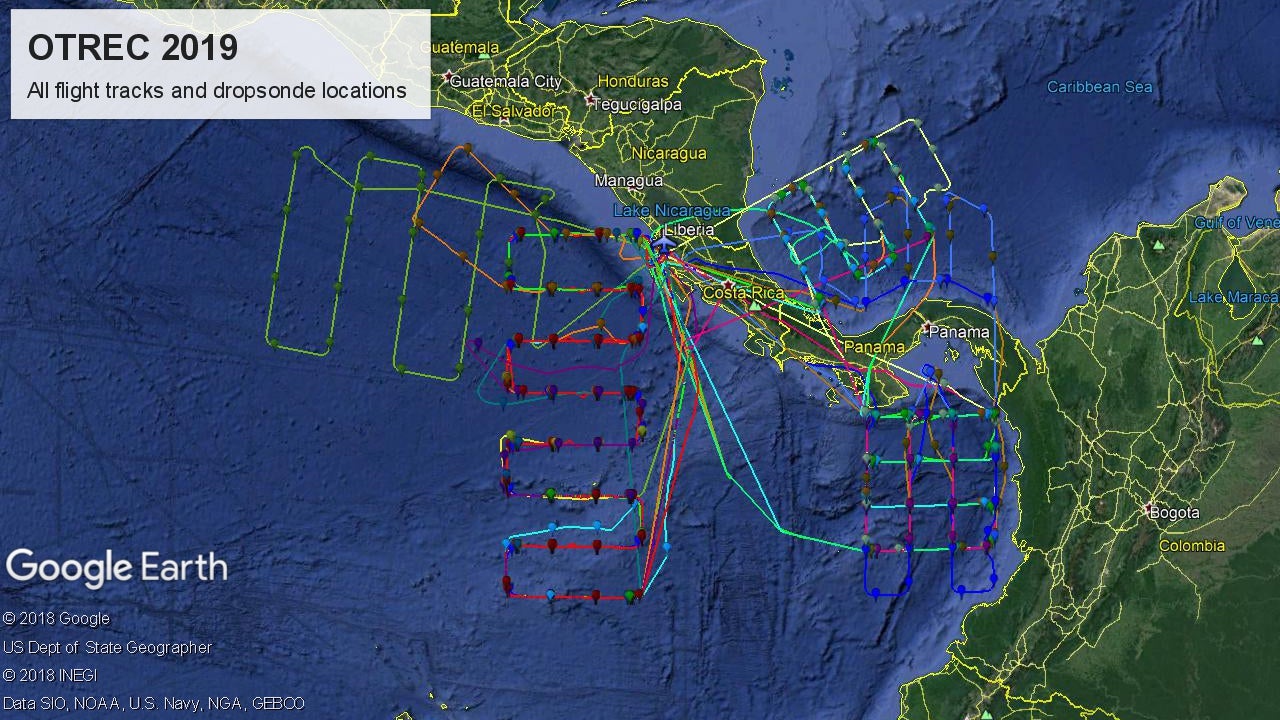OTREC
Organization of Tropical East Pacific Convection
 The tropical East Pacific exhibits a number of meteorological mysteries: What determines the distribution of deep atmospheric convection in this region, including especially its day-to-day variability? Why does higher rainfall occur over lower sea surface temperatures? Why do easterly waves form and/or intensify in the far East Pacific off the coasts of Central America and Colombia? We hypothesize that the answers to all three of these questions lie in the mechanisms that govern the interaction of convection with its surroundings. Observations in the tropical West Pacific, the Western Atlantic, and the Caribbean, as well as cloud resolving models of convection suggest that convection outside of the cores of intense tropical cyclones responds to three thermodynamic factors: stronger surface heat and moisture fluxes, increased column relative humidity of the troposphere, and decreased moist convective instability. The last factor is counter-intuitive, but is well supported by observations and modeling.
The tropical East Pacific exhibits a number of meteorological mysteries: What determines the distribution of deep atmospheric convection in this region, including especially its day-to-day variability? Why does higher rainfall occur over lower sea surface temperatures? Why do easterly waves form and/or intensify in the far East Pacific off the coasts of Central America and Colombia? We hypothesize that the answers to all three of these questions lie in the mechanisms that govern the interaction of convection with its surroundings. Observations in the tropical West Pacific, the Western Atlantic, and the Caribbean, as well as cloud resolving models of convection suggest that convection outside of the cores of intense tropical cyclones responds to three thermodynamic factors: stronger surface heat and moisture fluxes, increased column relative humidity of the troposphere, and decreased moist convective instability. The last factor is counter-intuitive, but is well supported by observations and modeling.
All flights tracks and all dropsonde locations during OTREC.
OTREC tested this hypothesis in the East Pacific and extreme SW Caribbean by using the NSF/NCAR Gulfstream-V aircraft to deploy gridded patterns of dropsondes and measure profiles of radar reflectivity and Doppler particle velocity with a W-band radar. The dropsonde measurements allowed us to evaluate the above thermodynamic forcing mechanisms. In addition, they yielded the mesoscale patterns of vertical mass flux and thermodynamic budgets needed to evaluate the response of convection to the forcing and the feedback of the resulting convection on its surroundings. The radar measurements documented the cloud physical characteristics of the convection that are needed to understand rain formation in these clouds.
Intellectual Merit:
Determining the large-scale environmental factors that control convection over tropical oceans is a long-standing problem in meteorology. The Organization of Tropical East Pacific Convection (OTREC) experiment allowed us to test recently proposed hypotheses to explain this control, thus improving our understanding of tropical weather systems in the East Pacific. The radar measurements of precipitation in conjunction with the dropsonde measurements deepened our knowledge of East Pacific convection and aided in the interpretation of satellite observations there.
Broader Impacts:
The poor performance of most global models in predicting the behavior of tropical phenomena such as the Madden-Julian Oscillation is a major impediment to better weather forecasts over the globe. Results from OTREC help provide a theoretical basis for a better parameterization of convection in these models, which is crucial to accurate weather forecasts. International collaborations with scientists from Costa Rica and Colombia strengthen international scientific connections between these countries and the United States. Outreach efforts fostered a better understanding of science at the K-12 level.
Principal Investigators
- David Raymond New Mexico Tech
- Zeljka Fuchs New Mexico Tech
Project Manager
- Pavel Romashkin NCAR/EOL
Data Manager
- EOL Archive NCAR/EOL/DMS
